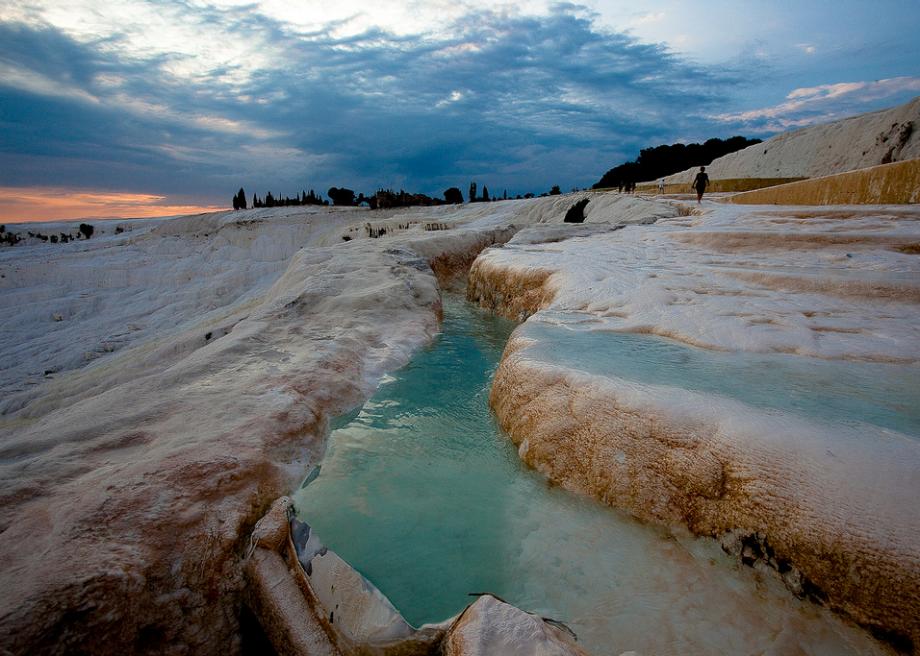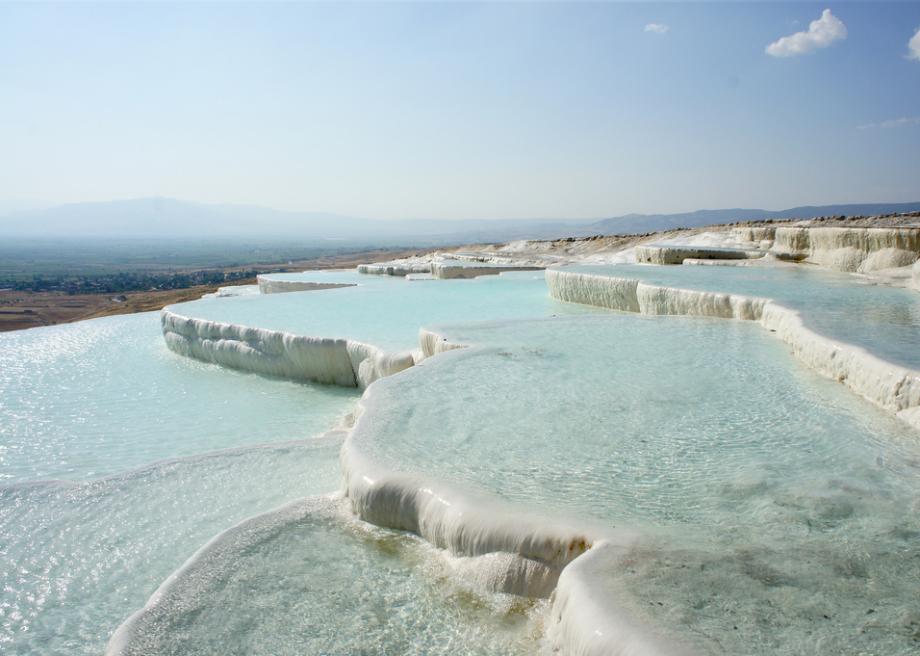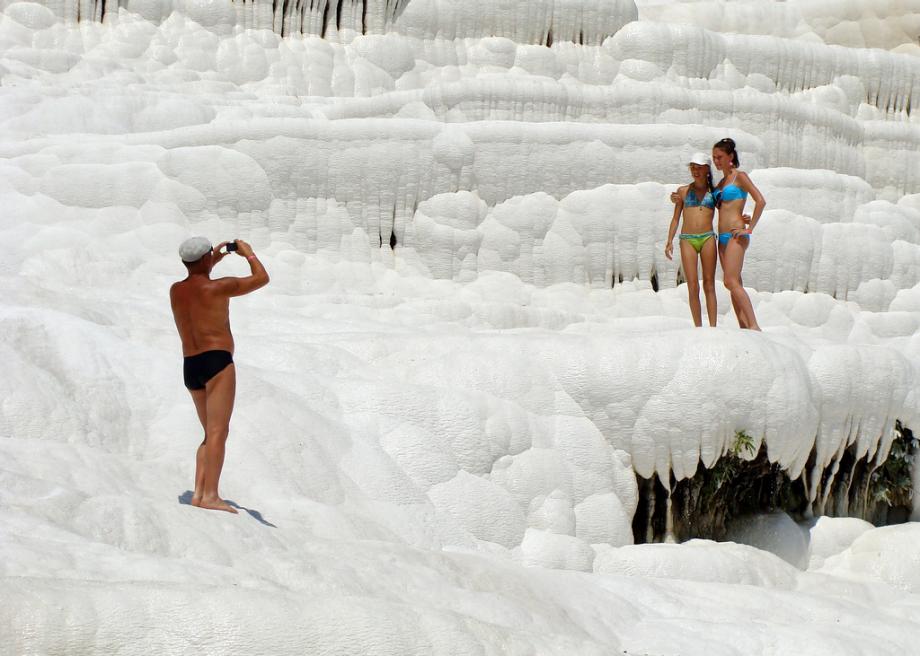Turquoise Terraces at the Cotton Castle: The Natural Pools of Pamukkale
Atlas Obscura on Slate is a new travel blog. Like us on Facebook, Tumblr, or follow us on Twitter @atlasobscura.
Once the Roman equivalent of a health spa, the spectacular rock formations below the ancient city of Hierapolis form a blindingly white natural cascading fountain. The limestone pools, terraced and shaped like oyster shells, formed due to mineral-rich water from ancient hot springs spilling down the hillside for millennia.
Named the "Cotton Castle" in Turkish, the site has been celebrated as a natural wonder since the second century BC, when the city of Hierapolis formed around the healing waters. A thriving metropolis during the Roman era, the city was rebuilt several times following earthquakes, and was not completely abandoned until 1300 AD. The ruins are extensive, including a Nymphaeum fountain which distributed water throughout the city, a large amphitheatre, as well as the remains of the largest ancient necropolis in Turkey.
Together with the ruins of Hierapolis, Pamukkale is now a protected UNESCO World Heritage Site. Prior to the 1988 designation, the terraces were in danger of being destroyed through a combination of neglect and commercial development. Hotels were built at the top of the site, partly obscuring the ruins. Wear and tear from visitors' shoes scarred the pools and turned many of them brown.
Efforts to protect the delicate natural phenomenon have dramatically changed the area. Hotels have been demolished, and, in an effort to maintain the pools' natural white appearance, access is tightly restricted. Water released from the spring is controlled and only distributed to a few pools at a time. Artificial pools for bathing tourists have also been added.
Although natural phenomena like the Pamukkale pools are exceedingly rare, a similar but smaller set of travertine pools exists in Huanglong, China. A New Zealand site beloved by Victorian settlers was destroyed by a volcanic eruption in 1886.
Spring awakenings:
View Pamukkale in a larger map



